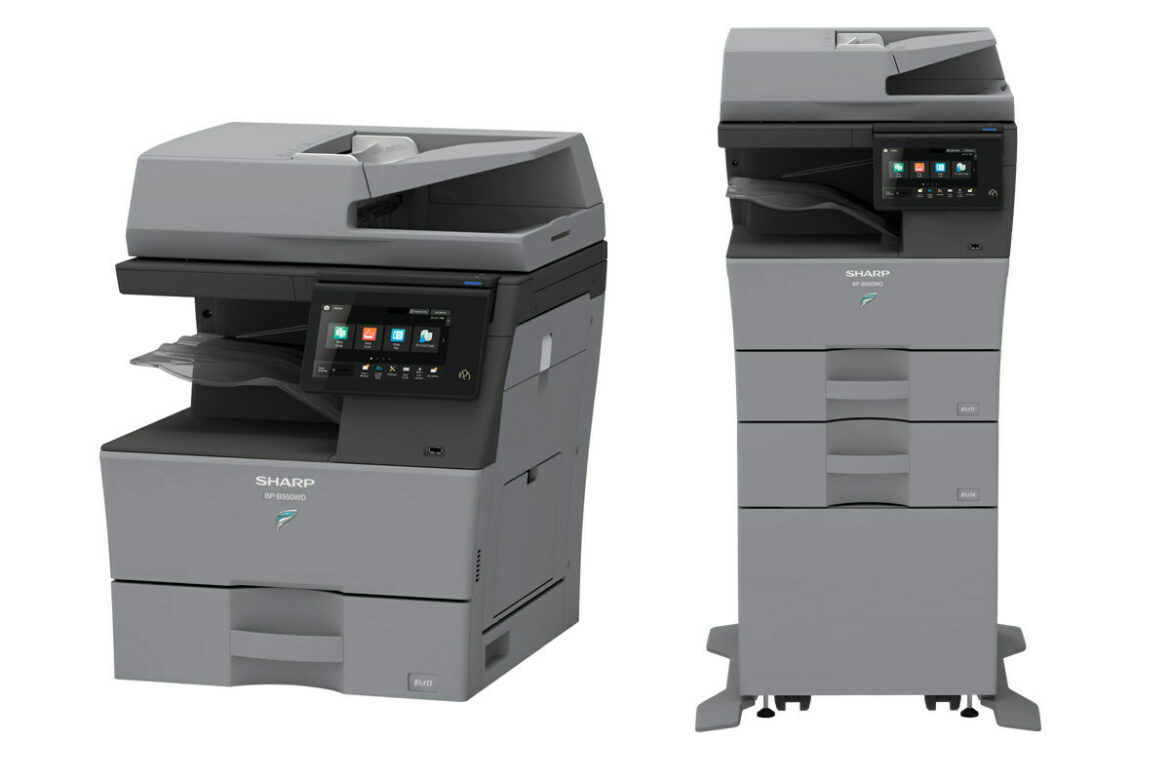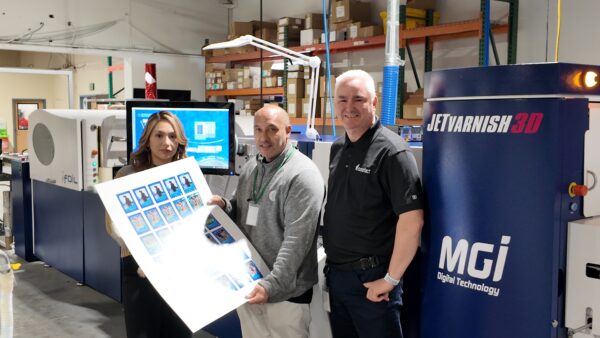Connect with a vertical that is still fit to print.
If you’re like many office technology dealers, your customer list includes a few schools or school districts. For them, printing is as essential as desks and whiteboards and can present significant opportunities.
Not so long ago, teachers used a printer and copier to produce lesson plans and handouts. Now, there may be a printer in every classroom, or teachers print at home and make copies at school. Sometimes, changes are made and printed on the fly.
Although lacking the glamour of many internet-enabled technologies, print remains a critical segment of technology that’s still happening in schools across America. Although not specifically mentioned in recent technology-in-education reports from Drexel University, the accounting firm KMPG, or the National Center for Education Statistics, print is a vital, tangible part of education that adds significant value to the screens of which many are enamored.
The Power of Print
Laura Bauer, director for HP’s office product portfolio organization noted, “Studies have shown print helps boost reading comprehension by 6% to 8%.” Her claim is bolstered by other research citing the importance of printed materials in the retention of information and cognitive development. For instance, printed worksheets can help keep a student’s attention focused on the work at hand without the distraction of links and smartphone apps. Many of us probably recall instructions to show our work on assignments requiring diagrams or calculations.
An Epson report said print remains relevant in classroom settings from young students through higher education. Reflecting Bauer’s comment, it noted that printed material improves comprehension, retention, and attention spans—particularly when using color or if a passage is more than a page long. The same report said students (who are often digital natives) may struggle to focus when working with digital tools that require frequent scrolling, a necessity that can lead to skimming and fragmented learning.
Print can also be user specific. For example, five- to eight-year-olds in kindergarten through second grade, and in special education, for example, are heavy users of printed material. For these kids, “…lessons are not only academic but made to increase dexterity and fine and gross motor skills through the use of writing, cutting, and gluing, none of which can be achieved in digital formats,” explained Jon Clemons, national practice director for education IT services with Konica Minolta’s All Covered division.
Meanwhile, classrooms are not the only home for printing in schools. Transcripts, visitor ID badges, event posters, and printed versions of library materials for term papers or studying all require print. Some of this material may live only online and be printed out at school (not all students have a home printer), but print is the common denominator. Much of this can be potential business for a dealer.
Know Your Customer
Knowing your customer is Sales 101. In this case, it means knowing what is important at each school within a district. This is important because educators’ needs may not filter up to the person who decides how many printers to buy. Understanding evolving customer needs helps you serve them better. Ask questions like, “Would you like to be able to (fill in the blank)?” Then, find a way to deliver.
“Educators choosing and using a printer care most about productivity, reliability, and security,” said HP’s Bauer. “They require printing and computing devices that integrate with each other and with learning management systems such as Google Classroom.” Learn what your customers need and work with your OEMs to find solutions.
Although needs vary by town or school district, many of the same issues apply to each. The challenges (and differentiators) for dealers begin with basic printing and even managed IT. As a trusted technology partner, you can encourage schools and teachers to adopt new technologies and do things they should do anyway, like backing up documents and having good security practices. Back-ups, for example, can be automated and work behind the scenes. As an office technology dealer, armed with some print management software, you can be a part of these practices and of training kids (maybe even your own) about using computers and peripherals in a secure way.
As a dealer, show how the value you offer goes beyond the printed page. For instance, monitoring print volumes can show how much paper a school should keep in stock. Tracking support calls coming to your shop can help determine the number of people a district should have on its computing help desk. Such seemingly minor points can help educators think about how optimizing printing can make better use of their district’s resources while making your dealership more valuable to them.
Think Like a Hacker
Even though teachers and administrators know schools can be a soft target rife with opportunity, you still must reinforce that being within the walls of a school doesn’t protect teachers or students from opportunistic hackers. Features such as secure printing and authentication can protect sensitive information, but other risks can be more subtle—and require thinking like a hacker.
Like this: Imagine a kid using his or her own computer at school picking up a virus that has lived quietly on the school network until a specific date. The kid’s computer goes home where it is plugged into another network. Then, Mom and Dad fire up their computers. The virus finds the parents’ social security numbers, banking, and credit card information. Ka-ching! Or it works the other way. A parent’s computer picks up a malevolent virus in a coffee shop or airport. It comes home where it moves to a student’s computer. Then it lands on the school network, where other kids’ computers pick it up and take it home. An office technology dealer can set up automated daily virus scans at schools to help prevent this. You say you don’t want that responsibility? Then, don’t sell to schools. Or if you do, encourage strong security protocols. Either way, check with your cyber-insurance company (not your agent) to make sure you have adequate coverage.
A Path to Light Production
At least within well-funded school systems, the best sales opportunities are with in-plant print shops. While A4 and A3 printers are the go-to devices for low-volume work it is more efficient and less expensive to produce bigger jobs on larger devices in an in-plant print center. Colleges, universities, and even large high schools have done this for years. In-plants use inkjet, laser, and wide format printers for full-color jobs such as course packs, posters, banners, and other materials that require duplex printing, finishing and binding, and more.
“Work can include customized educational materials such as personalized learning approaches,” noted Stephanie Keer, national practice manager for government/education at Konica Minolta. These can include customized workbooks, study guides, materials tailored to individual students’ needs, material formatted for special education, and curriculum support materials such as teaching aids, posters, charts, and other materials that need to be printed.
None of this portends the elimination of MFPs—those are too convenient to eliminate. “There’s a need for all sizes and types of settings but consolidation to larger devices is happening,” said HP’s Bauer.
Installing such machines in a school system can be an excellent entrée into light production. The potential these devices hold is one reason why some office technology vendors are rolling out full-color print engines capable of a couple hundred pages or more per hour. The upside for dealers is an entrée into higher volume printing with new demands for service and expertise.
Inkjet or Toner?
Schools are generally comfortable with inkjet and toner printers, but the ink-tank type that makes up the lion’s share of consumers’ inkjet printing has yet to prevail in schools. Konica Minolta’s Clemons pointed out how “The ink-tank model has driven the printing cost so low that paper is the most expensive piece of a print job.” While there is yet to be an explosion of ink-tank printers in most schools and districts, Clemons sees the conversion happening as the technology evolves. It may be time to encourage your school clients to switch to ink. This can be an excellent sales strategy if you are a RISO or an Epson dealer.
Print for Success
Giving students the benefits of access to printed pages requires printers that are affordable, convenient, and high performing. This is well within your wheelhouse as an office technology dealer, and your vendors can help you provide the right solutions for your education customers. As print technologies evolve, it’s important for office technology dealers and school districts to evaluate the diverse printing needs of every classroom and choose printers that will help students develop the critical thinking skills they need for success.





